|
0 Comments
Use the right equipment. A smaller blade may mean you need a few more shovelfuls to clear the driveway but it will also prevent you from lifting more than is safe. A plastic blade will also be lighter than a metal one, reducing the total weight you need to lift. Ergonomic handles will help as well. Warm up your body and your brain. As with any physical activity, you’re less likely to pull a muscle or overly stress your heart if you warm up and stretch first. Dress appropriately. Good gloves, warm boots with good traction, avoid shortcuts to avoid injuries. If you’re too hot fatigue will set and frustration that could lead to a fall or a strained back Also, before you jump right in with shoveling, test your footing first. Sometimes that first lift is deceiving and there may be ice under the snow. Think about what an injury would mean to your day, your week or possibly the rest of your life. Pace yourself during shoveling activities. Take frequent breaks and drink plenty of water.
Snow shoveling is strenuous work. Throw snow forward. Tossing snow over your shoulder or twisting your torso to toss snow to the side can compromise your posture. Push when possible. But watch out for bumps and cracks that can catch the edge of the shovel and send you off-balance or painfully introduce your torso to a shovel handle. Stay alert and out of the way. When working near a road face the road so you can hear and see what might be coming your way. When all done visit Full Spectrum Chiropractic and receive a heated hydro massage and have some hot clay packs placed on your sore muscle to relieve your muscle tension you may have created while clearing your walkway. Out with the Dog and in with the Pig! I encourage you to reflect, briefly, upon the major themes of the Earth Dog—loyalty, trust, safety, boundaries, argument, spite, territory, love, affection, companionship, in/out groups, stubbornness, connection, trauma, anxiety, solitude, privacy, protection, justice, inquiry, fairness, and equity,to name a few. How have these manifested in your life? In the world around you?
Staring February 5th, we “officially” transition into the year of the Yīn Earth Pig, so put on your party hats! As the 12th, or “last,” Animal in the Zodiac, the Pig is the party at the end! All your Ancestors have ever wanted is for you to invite the people you love into your home, so you can cook, eat, and make babies—your enjoyment is their immortality! As we delve into the richness of the Pig symbol, I invite you to consider the possibility that life can be remarkably simple and that the deepest meaning of everything might be right on the surface. If you ask a Pig—what is the meaning of life? If they’re honest, they will probably say, “Food! Sex! Music, Art!” So, relax. I know the sky is falling, and we all have monumental ambitions to save the world, which seems to be spinning more out of control every day, but this Year is already inviting us to calm the hell down, eat a snack, get cozy with a loved one, and take a nap—the “future” might actually depend on it. 象 – Symbolism First, in order to understand the nature of the Earth Pig, we must examine the Chinese Character for Family, Jià, 家. The character contains the radical mián, 宀, which means roof, and the radical shĭ, 豕, which means pig/boar, so it’s a pig under a roof, and it is the Chinese word for family or blood relations. It also means household, home, and domestic, and it is also a term for a lineage, tradition, or school, such as Chánjià, 禪家, or Dàojià 道家 (Buddhist/Daoist). The Character Jià, 家, and the symbol of the Pig, are intimately related to the Chinese principal of family, continuity, immortality, and procession, which exemplify the nature of Traditional Culture itself. The Pig is at the heart of what it means to be Chinese, for "China" was the decision of about 80 cultures to stop being nomads and to farm grain instead. That meant no more herds, and since there are no herds of pigs, the pig became their meat of choice. There is an expression among Chinese farmers that goes, “we only dig in our Ancestors.” Meaning the family has been there so long the soil is made of their dead relatives—this is Earth Pig Qì. This Year will bring forward memories and values so ancient they can’t be named. This is a year to remember what we are trying to save and to rest so that we can do so. Wealth in Chinese culture was often measured by the number of Pigs you owned, for Pigs were and still are a mainstay of the Chinese diet—fatty pork, rice, and cabbage. Many other ancient traditions outlawed pork, but the Chinese made a different decision, in part because Pigs don’t need to be grazed like cows and sheep. Everyone in China eats pigs, and as any vegetarian who has traveled in China can attest, it is very common to order a vegetarian meal only to find big hunks of pork in it. Of course, this sounds strange from our perspective, but take yourself back to an early agrarian people, transitioning from a nomadic to a domestic relationship with animals. Within a few generations, the wild boar transformed from a big black hairy tusked beast to a fat pink pig that could give birth to and nurse 60 piglets in a litter—this is the very meaning of family, reproductive essence, and motherhood. The Pig is therefore the ultimate symbol of nourishment, nurturing, and generosity. -Gregory David Done http://www.tigersplayastrology.com/about.html Muscle injuries are very common in both professional and recreational athletes. They typically occur in muscles that cross two joints, during explosive activities such as sprinting, and when the athlete is suddenly increasing their exercise regimen. These injuries result in pain, swelling, and loss of strength and motion. If there is a partial tear then the athlete can return when they are pain free and have normal strength and motion.
This usually occurs following anywhere from a few weeks to a few months of appropriate treatment and therapy. When the muscle is completely ruptured, the athlete may benefit from surgical repair. Many athletes are able to return to their previous level of competition, but since scar tissue forms at the site of injury, they may susceptible to another injury at that location. Here at Full Spectrum Chiropractic we use several modalities to help prevent re-injury as well as speed up your healing process and recovery time: Heat to reduce muscle spasm. Graston massage to reduce scaring and break up adhesions between the muscle and fascia. Taping of injured area to provide support and bring mindful awareness to injured area. Chiropractic adjustments to improve AROM and reduce muscle shortening by realigning your body. Schedule your free consult today. Join us for a wonderful afternoon celebration !!!! January 21, 2019 Games and Cake Bring the family to meet our White Tiger We promise he doesn't bite! Sorig Kids will be offering TIBETAN YOGA classes for children and adults-
for more info check out https://www.sorigkids.com/ |
AuthorFull Spectrum of Writers! Archives
April 2024
Categories |

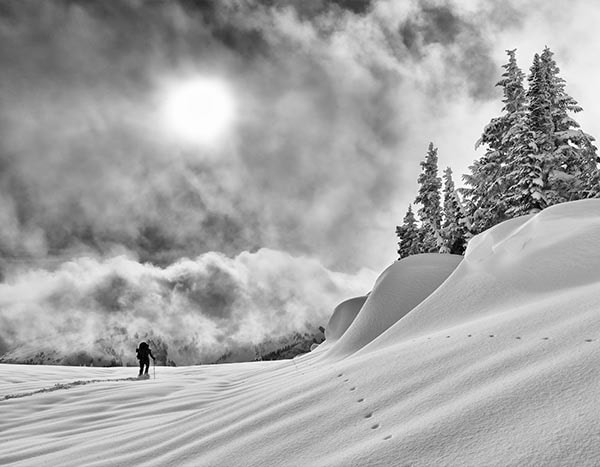



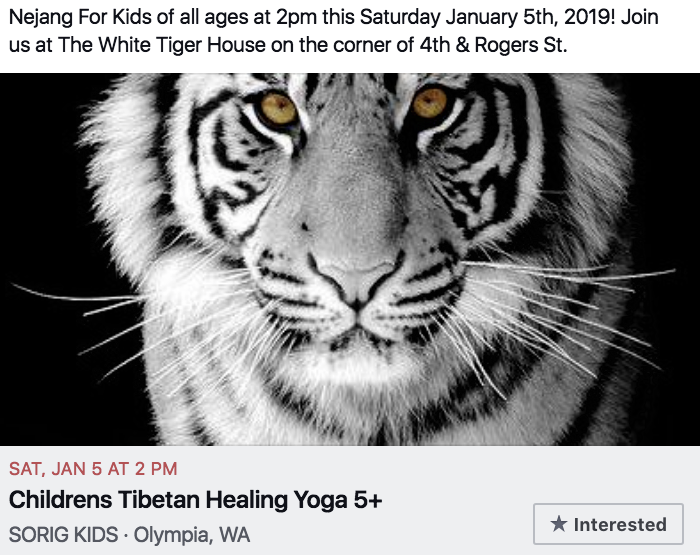
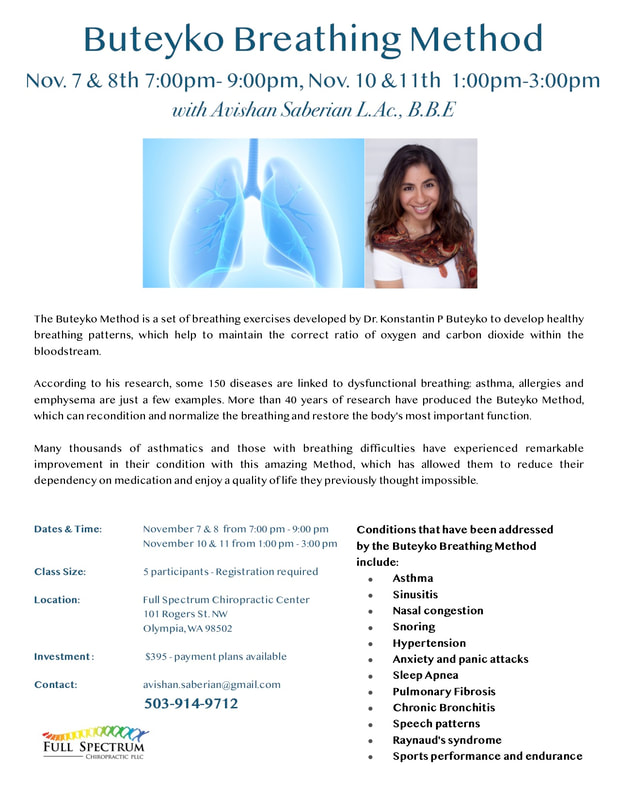
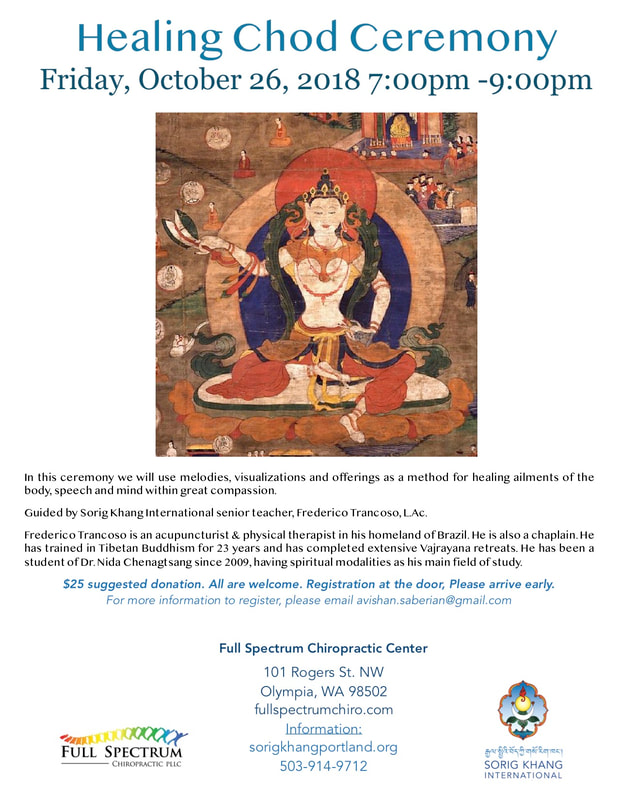
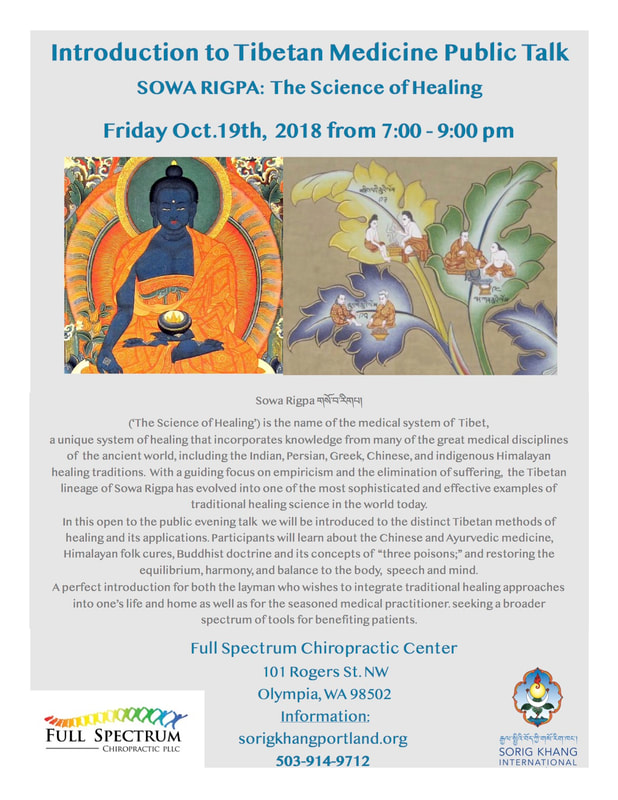

 RSS Feed
RSS Feed